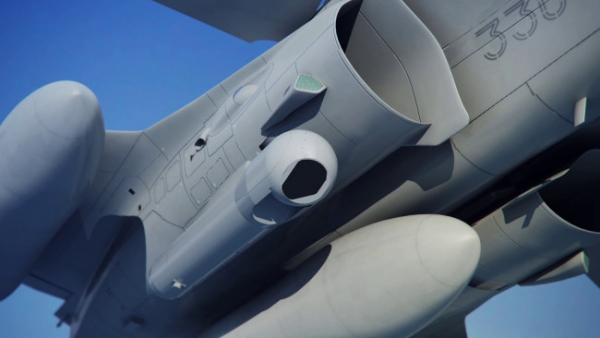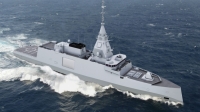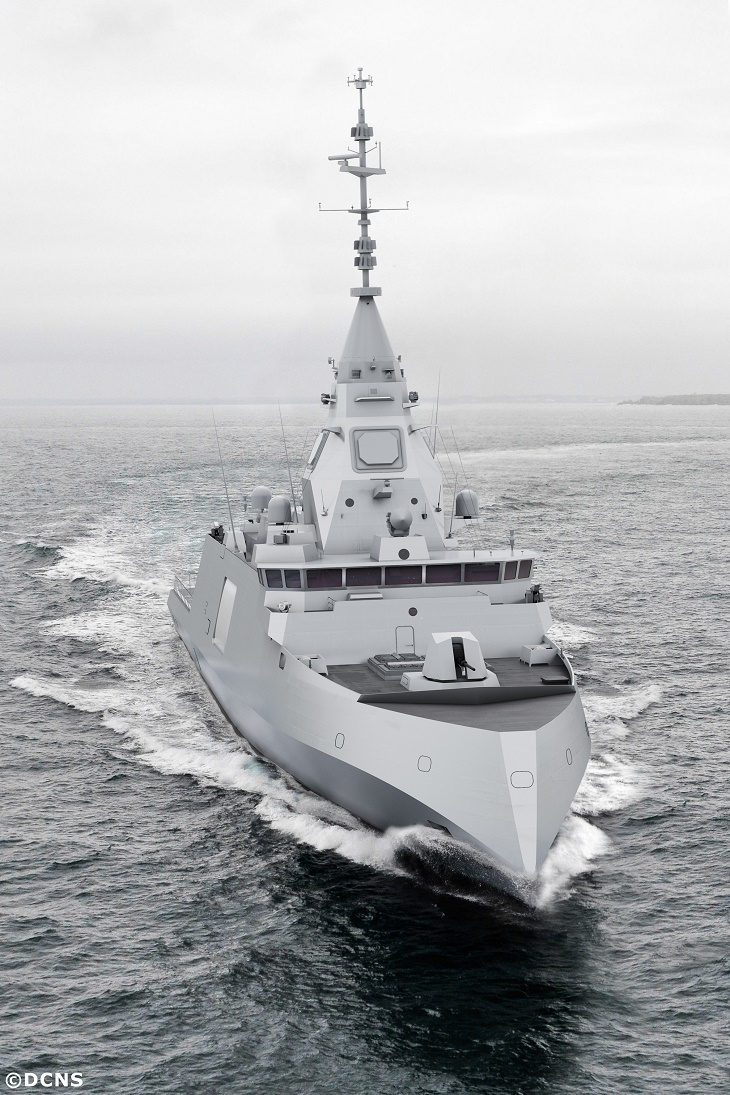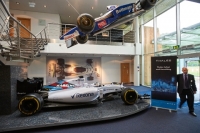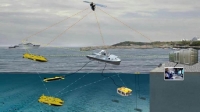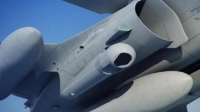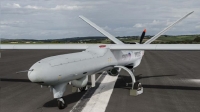Air power is no longer just a matter of precision targeting. The latest multi-function optronic pods are an integral part of the intelligence chain and a key enabler of network-centric operations, drastically shortening the decision-action loop.
Pilots used to know the locations of their targets before they left on a mission. But today they spend a lot of their time in the air looking for enemy combatants, possible obstructions, ambushes and other threats. High-performance aerial reconnaissance is still a critical capability calling for dedicated systems. But fast jets equipped with the latest generations of multi-function pods play a growing role in the image chain and enhance the C4ISR capabilities of modern armed forces.
Time-sensitive imagery
Strike fighters used to mainly target buildings and large structures, but in the asymmetrical conflicts of today, targets are smaller and highly mobile. Adversaries may travel in pick-ups and use unconventional tactics. They often operate in urban environments where combatants and civilians are intermingled, making them increasingly time-sensitive targets.
With very limited windows of opportunity to legitimately attack a target, aircrews are under ever increasing pressure. The same image sources now also serve multiple purposes beyond the strike mission itself. In addition to finding and engaging targets, they are the eyes in the sky of ground troops, seeing over the horizon for tactical units and feeding into the broader command structure.
How do pods work?
Optronic pods capture a scene and display it to the crew, who can zoom in on the image to discriminate between civilians and combatants. The system extracts the precise target coordinates, which are then used to guide the weapon, or other friendly forces, to that particular location.
Smart weapons may be launched either from the designating aircraft or by other aircraft or ground units. The laser spot generated by the pod is not visible to the human eye and it is coded to prevent opponents from using their own laser devices to divert a weapon away from its intended target.
Four decades of pods by Thales
Thales has designed laser targeting pods for 40 years, with over 350 units sold worldwide for 11 different aircraft types.
The original ATLIS pod brought air forces a surgical strike capability that changed the face of air warfare. Ten years later, in the 1980s, the second generation of pods added functions such as video recording for damage assessment and infrared sensors for night vision capabilities.
As image quality and data processing technologies improved, the role of the pod expanded again. The DAMOCLES was the first pod capable of monitoring areas of interest at long range, day and night, as well as positioning and engaging targets with fearsome accuracy.
TALIOS is due to enter service with French forces from 2018, representing the fourth generation of multi-function pods and offering innovative features such as colour imagery, laser-enhanced imagery and the ability to cross-cue data from multiple sources through the Permanent Vision™ concept.
Connected pods and the smart image chain
A growing challenge today is to make sense of this deluge of information. With its bi-directional data link, TALIOS will be the first pod-mounted system to cross-cue data from various sources, including terrain models, digital maps and information coming from other aircraft and troops on the ground to provide to the crew and unmatched situational awareness.
Communications are crucial at every point in the chain, providing not only imagery to aircrew, but also securely transmitting image data to command centres and personnel operating Networked Image Exploitation Systems (NIESs) on the ground.
NIES : https://www.thalesgroup.com/en/nies-networked-image-exploitation-system
Already, the latest optronic systems support intelligent identification of objects, determining the make, colour and model of a vehicle, for instance, or comparing an object to similar known structures in an intelligence database. And Big Data analytics, machine learning and augmented reality will make tomorrow's pod-mounted systems even smarter.
Flexible service solutions
Thales optronic systems are designed to maximise reliability and minimise the need for maintenance. But when maintenance is required, both the pod design and the support tools provided by Thales make the job as quick and simple as possible both on-site and in the field.
With a full range of repair, maintenance and life cycle management options available, Thales works with individual customers to design tailored service solutions that complement their own support organisations and keep pace with their requirements.
For customers with their own repair and maintenance organisations, Thales can provide consultancy, training, tools and spare parts — even a turnkey maintenance centre.
Remote assistance and predictive maintenance
The REMAIN (Remote Assistance and Investigation) solution is a secure video maintenance service that provides real-time access to Thales know-how to assist in diagnostics and repair. For the most delicate maintenance or reassembly operations, Thales also proposes remote assistance solutions using augmented reality.
For the TALIOS programme, a predictive maintenance function known as AMI will collect data from sensors embedded in each pod to optimise maintenance logistics and improve operational readiness.
